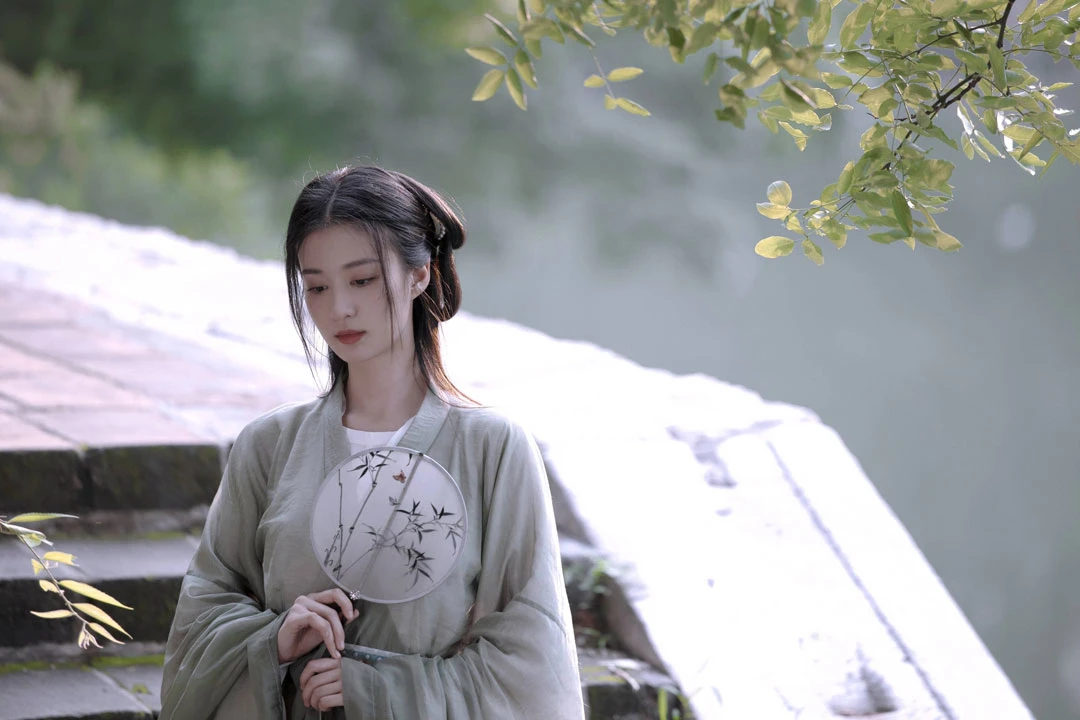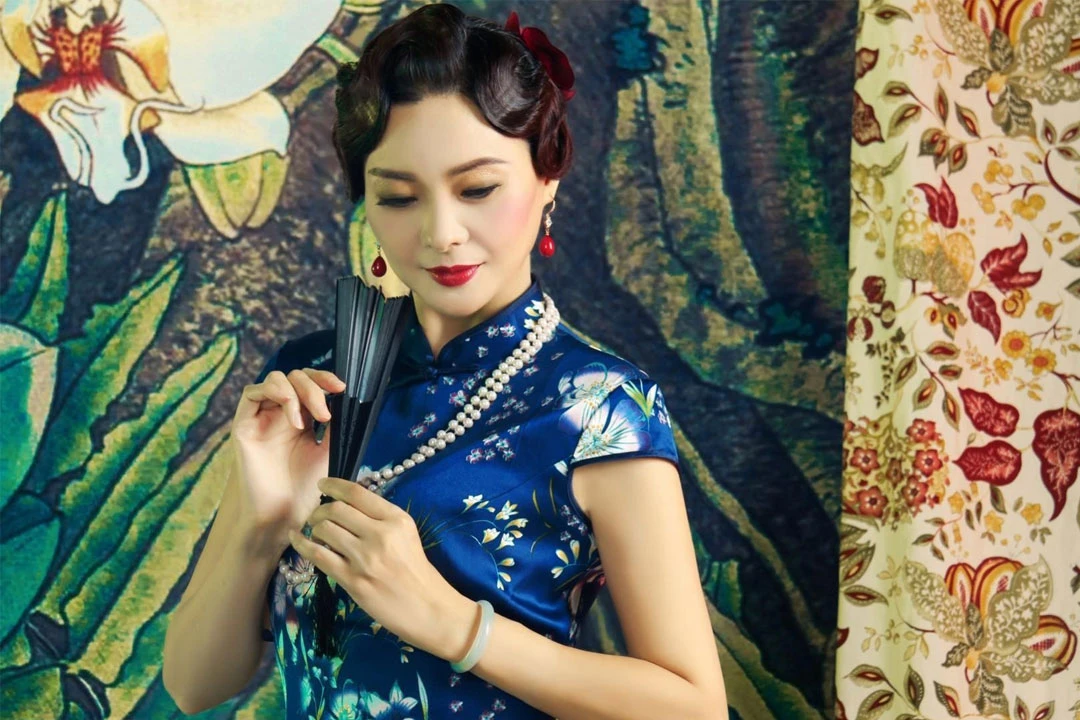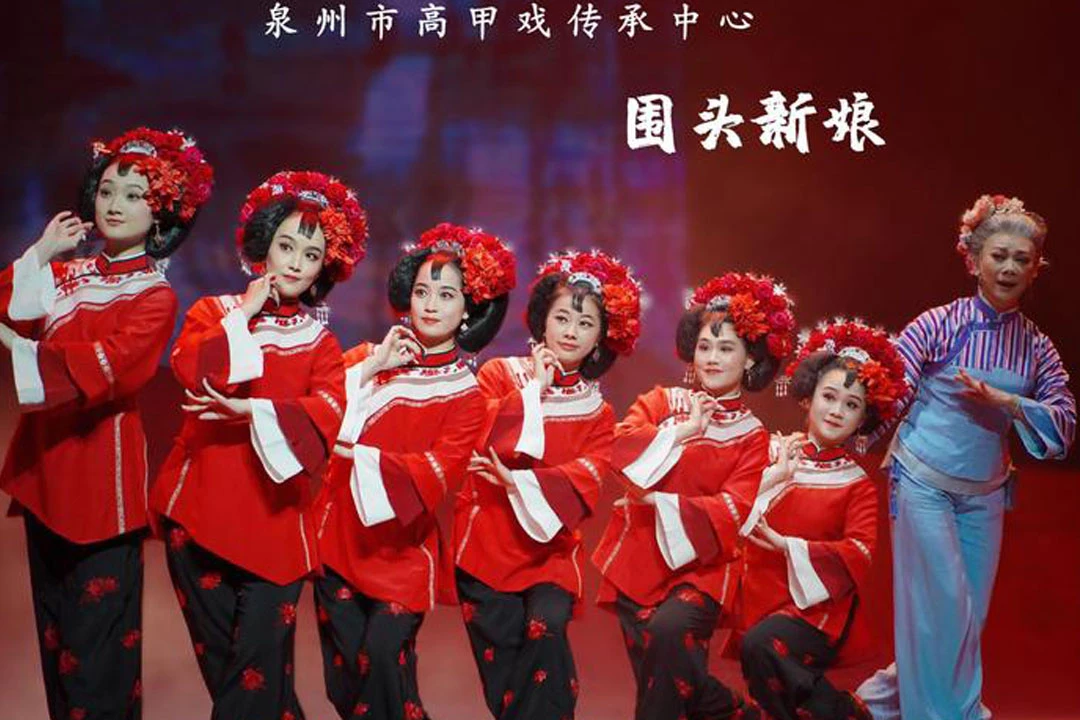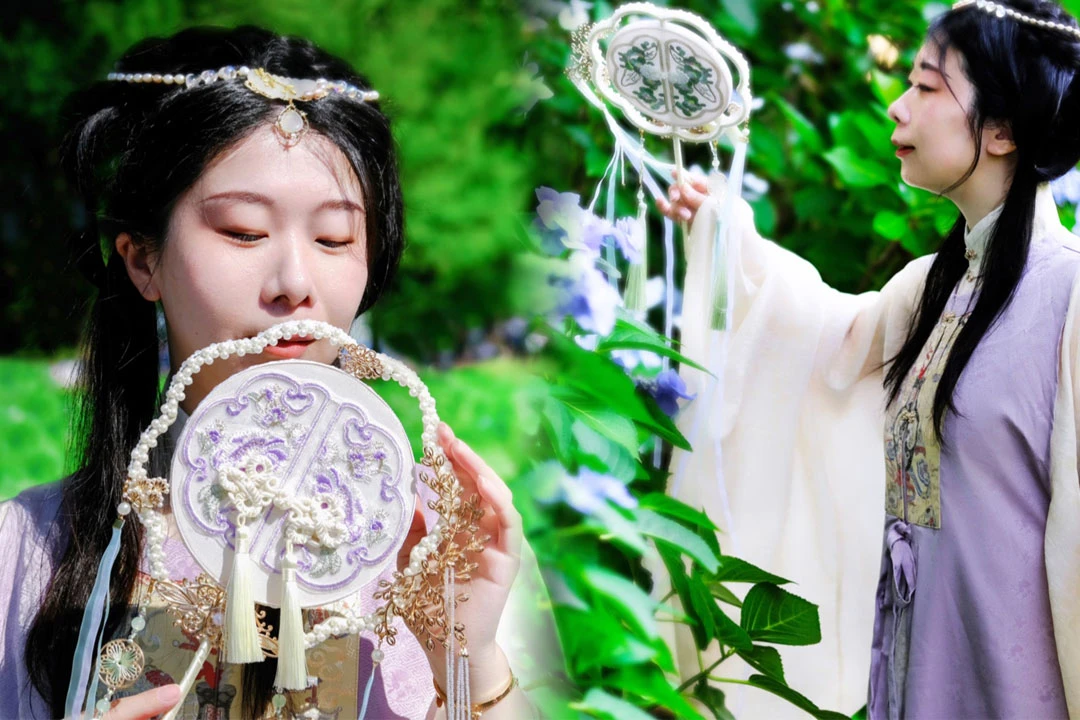Article
搜索结果:
-
A New Era in Chinese Period Dramas
From Love Triangles to Ledger Books: The Evolving Landscape of Female-Centric Period Dramas In the ever-changing world of Chinese television, a quiet revolution is taking place. The summer of 2024 has seen an unexpected surge in the popularity of period dramas, with "The Tale of Liu Zhu" emerging as a standout hit. This series has not only topped various streaming platform charts but has also sparked a broader conversation about the portrayal of women in historical fiction. The success of "The Tale of Liu Zhu" (柳舟记) represents a significant shift in the landscape of female-centric period dramas, colloquially known as "古偶" (gǔ ǒu). Traditionally, these dramas have focused heavily on romantic entanglements and rivalries between women vying for male attention. However, "The Tale of Liu Zhu" breaks this mold by prioritizing the protagonist's personal growth and business acumen over her romantic pursuits. This new approach has resonated strongly with audiences, particularly female viewers who have long yearned for more empowering representations of women in historical settings. The hashtag "Period dramas finally give female characters their careers back" quickly trended on Weibo, reflecting a growing demand for stories that showcase women's capabilities beyond the realm of romance. The evolution of female-centric period dramas… -
Unraveling the Inspiration for Ma'ertai Ruoxi
Historical Roots and Literary Imagination: The Real Empress Ulanara In the realm where history intertwines with fiction, few characters have captured the public imagination quite like Ma'ertai Ruoxi (马尔泰若曦) from the novel "Startling by Each Step" (步步惊心). While the character herself is a creation of the author's imagination, her story draws inspiration from a real historical figure - the only official Empress of the Yongzheng Emperor during China's Qing Dynasty. The true inspiration behind Ma'ertai Ruoxi was Empress Ulanara, born into the prestigious Ulanara clan. As the daughter of Fei Yanggui, a prominent inner minister of the imperial court, she entered palace life at a young age. Her grace and charm quickly caught the attention of the Kangxi Emperor, who took a liking to the young woman. In a pivotal decision that would shape the course of Qing history, Kangxi arranged for her to marry his fourth son, who would later become the Yongzheng Emperor. Empress Ulanara's life in many ways parallels the fictional narrative of Ma'ertai Ruoxi. Both entered the Forbidden City as young women, navigating the complex social and political landscape of the imperial court. Both earned the favor of the reigning emperor and became intimately connected to the future… -
The Price of Peace in a Fractured Nation
Double Agents and Deadly Gambles: The High Stakes of Wartime Espionage In the twilight of a nation torn by war and conflicting ideologies, the true measure of loyalty is not always clear. The critically acclaimed drama "Lone Battle in a Lost City" (孤战迷城) delivers a masterful exploration of this theme, weaving a tapestry of intrigue, sacrifice, and unexpected alliances against the backdrop of a China struggling to define its future. As the final curtain falls on this gripping saga, viewers are left to ponder the nature of heroism and the steep price of peace. The story's protagonist, Ou Xiao'an, (欧孝安) emerges as a beacon of justice, his actions a testament to the power of unwavering conviction in the face of overwhelming odds. Yet, his victory is not without cost, as the path to triumph is paved with difficult choices and painful sacrifices. Ou's journey from a man without a past to the linchpin in foiling a catastrophic plot is a microcosm of China's own struggle for identity. His recovery of lost memories mirrors the nation's attempt to reconcile its fractured history, while his delicate balancing act between multiple factions reflects the complex political landscape of the time. The thwarting of the "Falling Cherry Blossom… -
The Fabric of Tradition - The Qipao's Modern Renaissance
From Cotton to Silk: The Versatile Materials Shaping Contemporary Qipao The qipao, a garment steeped in Chinese cultural history, has undergone a remarkable evolution in recent years. This iconic dress, once a symbol of 1920s Shanghai g,amour, has reemerged as a versatile piece of clothing that bridges the gap between tradition and modernity. At the heart of this renaissance lies the diverse array of fabrics now used in qipao production, each bringing its own unique characteristics to this timeless design. Jacquard cotton, a favorite among qipao enthusiasts, offers a perfect blend of comfort and elegance. This fabric, characterized by its intricate woven patterns, provides a subtle texture that catches the light in fascinating ways. Unlike printed cottons, jacquard patterns are woven directly into the fabric, creating a more durable and sophisticated finish. The versatility of jacquard cotton makes it suitable for a wide range of occasions, from casual daywear to more formal events. For those seeking the pinnacle of luxury, silk remains the gold standard in qipao fabrication. Composed of fibroin and sericin proteins, silk offers an unparalleled combination of softness, sheen, and drape. The natural properties of silk, including its ability to regulate temperature and moisture, make it an… -
The Enigmatic Elegance of Joey Wong: From Stardom to Serenity
Unveiling the Tranquil Life of a Former Screen Icon In the serene suburbs of Vancouver, an Eastern woman has quietly lived for 16 years, having once dazzled the film world. This mysterious figure is none other than Joey Wong, the former queen of Hong Kong cinema. Renowned for her enchanting portrayal of Nie Xiaoqian (聂小倩) in "A Chinese Ghost Story," Wong captured the hearts of audiences and secured her place among the Hong Kong Four Heavenly Queens. Yet, at the peak of her career, she chose to step away from the limelight, leaving the glitz and glamour behind. Why did this beloved star make such a startling decision? How has she managed to maintain a high-quality life without actively working? Let's delve into the mystique of Joey Wong's (王祖贤) reclusive lifestyle and explore her remarkable journey. From Stardom to Solitude: The Journey of Joey Wong Joey Wong's career was nothing short of a dazzling metamorphosis. From her humble beginnings, she ascended to become a top star in Hong Kong's film industry. Her portrayal of Nie Xiaoqian in the 1987 film "A Chinese Ghost Story" marked a turning point, establishing her as a major force in cinema. Wong's ethereal beauty and gentle demeanor brought her… -
Reimagining Qipao for a New Generation
A Lifetime Devoted to the Art of Qipao In the bustling heart of New Taipei City, a small studio stands as a testament to one woman's lifelong dedication to the art of qipao. Yuan Nienhua (袁念华), now 74, has spent decades breathing new life into this iconic Chinese garment, weaving together threads of tradition and innovation to create pieces that speak to women across generations and across the Taiwan Strait. Yuan's journey with qipao began on her 10th birthday when her father, a mainland Chinese immigrant to Taiwan, gifted her a small qipao. This seemingly simple gesture was laden with cultural significance - a tangible link to their ancestral home in Jiangsu and a symbol of Chinese femininity. Yet for young Yuan, the garment initially felt cumbersome and unattractive. "My father was always homesick," Yuan recalls. "Making me wear qipao was his way of holding onto our roots. But at the time, I found it impractical and unflattering." This early resistance sparked a creative fire in Yuan. Determined to make the qipao more appealing, she began experimenting with alterations, utilizing the embroidery skills she had learned from her mother. Little did she know that these childhood attempts at "improving" the qipao… -
Quanzhou's Vibrant Performing Arts Scene
Peking Opera Finds a New Stage in the Cradle of Nanyin (南音) In the heart of Quanzhou (泉州), a city renowned as the "Capital of Nanyin" and the "Cradle of Southern Chinese Opera," a unique cultural fusion is taking place. The fifth installment of the 19th "Dongnan Morning Post · Summer at Fuwen Temple" folk stage series recently showcased this blend, featuring a special performance by the Licheng District Siyun Peking Opera Art Troupe at Quanzhou Fuwen Temple Square. Quanzhou, historically a birthplace and dissemination center for Southern Opera, has long been celebrated for its rich theatrical traditions. While local opera forms like Liyuan Opera, Nanyin, Puppet Theater, Gaojia Opera, and Dacheng Opera continue to thrive, the city has also warmly embraced theatrical styles from other regions. This cultural openness has given rise to groups like the Licheng District Siyun Peking Opera Art Troupe, which is bringing the classical art of Peking Opera to southern audiences. The evening's performance, which began at 7 PM, opened with a captivating display of local flavor. The folk dance team of the Siyun Peking Opera Art Troupe presented "Dagu Liangsan" (Big Drum and Cool Umbrella), a traditional dance from the Minnan region. This lively performance, with… -
Navigating Love and Self-Discovery: Insights from Ma Yili
Unveiling the True Essence of Relationships In the world of high-profile relationships and public scrutiny, Ma Yili's (马伊琍) reflections offer a profound perspective on the complexities of human connections. Her insights challenge conventional views on romance and partnership, advocating for a deeper understanding of relationships that goes beyond surface-level attractions. Ma Yili's candid observation highlights a fundamental truth: the most lasting and fulfilling relationships often stem from genuine friendships rather than romantic entanglements. While celebrity marriages like Ma Yili's and other high-profile figures may captivate the public's eye, they frequently face strains that reveal the intricate nature of romantic partnerships. Romantic relationships are often laden with expectations, control, and possessiveness, creating an environment where the bond can be tested. In contrast, friendships typically offer a more relaxed and less demanding interaction, allowing for a different type of connection that can endure over time. The emphasis on mutual support without the burden of controlling tendencies often results in a more stable and lasting relationship. This perspective aligns with the idea that as relationships deepen, the visibility of true selves becomes clearer. The early stages of acquaintance may only skim the surface, but true friendships and partnerships delve deeper, revealing aspects of ourselves that… -
From Stardom to Serenity: The Evolution of He Wenna
He Wenna's (何雯娜) career trajectory mirrors the dramatic arcs of classic tales. Once a dazzling star of Chinese gymnastics, her journey from Olympic fame to personal turbulence exemplifies the highs and lows of a celebrity life. At the pinnacle of her career, He Wenna was celebrated for her athletic prowess, achieving acclaim on the global stage. Yet, beneath the glitz of Olympic medals and accolades, lay a life intertwined with personal battles and public scrutiny. In 2008, He Wenna captivated audiences with her performance at the Beijing Olympics. Her flawless routines and sheer talent earned her a place among China's elite athletes. However, her career took an unexpected turn in 2016 during the Rio Olympics. Despite being a top contender, internal strife and emotional turmoil led to a disappointing fourth-place finish, a far cry from the gold she had once seemed destined to claim. Romantic Entanglements and Public Drama No sooner had He Wenna's athletic career reached its zenith than her personal life became a source of relentless media fascination. The public's fascination with her romantic relationships added layers of complexity to her life story. The most notable of these was her relationship with fellow gymnast Chen Yibing (陈一冰). Their… -
Bridging Ancient Tradition with Modern Fashion
Hanfu's Resurgence: A Symbol of Cultural Pride and National Confidence The recent surge in popularity of Hanfu, traditional Chinese clothing, has sparked both enthusiasm and debate across China. As more people don these garments for everyday wear and special occasions, questions arise about the authenticity of modern Hanfu and the cultural significance of this trend. Experts in costume history and market operators offer insights into this fascinating cultural phenomenon. Professor Huang Qiang, a distinguished scholar of costume history at Jiangsu Open University, provides a historical context for understanding Hanfu. He explains that traditional Chinese clothing has a rich history dating back to legendary figures like the Yellow Emperor, with each dynasty developing its own distinctive styles. From the deep-robed attire of the Qin and Han dynasties to the loose-fitting garments of the Wei and Jin periods, Chinese clothing has always reflected the aesthetics and social structures of its time. Importantly, Professor Huang distinguishes between the broad category of traditional Chinese clothing and the more specific concept of Hanfu as it's understood today. While traditional Chinese attire encompassed clothing worn by both Han Chinese and sinicized ethnic minorities throughout China's long history, modern Hanfu typically refers specifically to the clothing of… -
Character Dynamics in "Lone Battle in a Lost City"
In the intricate world of "Lone Battle in a Lost City," (孤战迷城) alliances shift like sand, and identities are as layered as an onion. This gripping drama set in wartime Shanghai weaves a complex tapestry of characters from three main factions: the Kuomintang (KMT), the Japanese collaborators, and the Chinese Communist Party (CCP) underground. Each character navigates a treacherous landscape where loyalty is constantly tested and true motivations are often hidden beneath multiple facades. At the heart of the KMT operations is the Chongqing Station of the Military Statistics Bureau. Wei Qingming (魏清明), portrayed by Zhang Xilin, stands as the newly appointed station chief, surrounded by a mix of loyal subordinates and potential rivals. His trusted secretary, Miao Jiang (Luo Qiuyun), represents unwavering loyalty in a sea of uncertainty. The station's internal dynamics are complicated by the presence of two deputy chiefs: Feng Yunian (冯毓年) (Zhang Shen) and Wen Yishan (Zhang Zijian). Wen, the former chief, harbors resentment over his demotion, adding a layer of tension to the already precarious situation. This power struggle within the KMT ranks mirrors the larger conflicts playing out across Shanghai. Supporting characters like Mao Renxing and Jiang Zhanxin further flesh out the KMT's operations, each bringing their own skills… -
One Woman's 30-Year Mission to Redefine Chinese Cuisine
A Lifelong Commitment to Culinary Truth In the culinary world, few figures have been as dedicated to the accurate representation of Chinese cuisine as Fuchsia Dunlop. Over the past three decades, this British writer has taken on the monumental task of dispelling the widespread misconceptions that often cloud Western perceptions of Chinese food. From her early days in Sichuan to her most recent book Invitation to Enjoy (君幸食), Dunlop has worked tirelessly to show the world that Chinese cuisine is far more than the cheap, greasy takeout often associated with it in the West. Dunlop's journey began in the 1990s when she first arrived in China, driven by a deep curiosity about the country's food culture. Over the years, she immersed herself in the intricacies of Chinese cooking, often becoming the first foreigner to enroll in culinary programs traditionally reserved for locals. Her dedication to authenticity and respect for Chinese traditions earned her the trust and admiration of many within China's culinary community. Debunking Myths and Elevating Chinese Cuisine In her latest book, Invitation to Enjoy, Dunlop addresses the persistent stereotypes that still linger in the West about Chinese food. "People in the West are willing to pay a fortune… -
The Ancient Roots of Modern Triumph: China’s Legacy in Sports
A Civilization’s Love for Physical Excellence China’s impressive performance at the recent 33rd Summer Olympic Games, where the nation secured 40 gold medals, 27 silver medals, and 24 bronze medals, is a testament to both its athletic prowess and the deep cultural significance of sports in Chinese history. While the achievements of the Chinese sports delegation have brought pride to the nation, they also highlight a cultural continuum that stretches back thousands of years. As a civilization with a history spanning over 5,000 years, China has long valued the cultivation of both the body and the mind. The earliest records of sports in China date back to the Shang Dynasty (1600–1046 BCE), where oracle bone inscriptions reveal at least nine distinct types of physical activities. These activities included wrestling, archery, horseback riding, mountain climbing, running, rowing, music and dance, and swimming. Remarkably, many of these ancient activities remain popular in today’s sports competitions, illustrating the enduring nature of China's athletic traditions. One of the earliest recorded sports is wrestling, an activity that appears on oracle bones under the character "Fight" (斗), depicting two individuals engaged in a hand-to-hand struggle. This ancient form of wrestling is strikingly similar to modern practices,… -
A Timeless Icon of Chinese Femininity and Cultural Evolution
From Silver Screen to Street Style: The Enduring Allure of the Qipao The qipao, a quintessential symbol of Chinese femininity, stands as a testament to the nation's rich cultural heritage and its journey through modernity. This iconic garment, with its ability to accentuate the female form while maintaining an air of elegant restraint, has captured the imagination of designers, filmmakers, and fashion enthusiasts alike for generations. In the pantheon of Chinese cinema, the qipao has played a starring role, often serving as a visual shorthand for sophistication, sensuality, and a particular moment in time. From Maggie Cheung's haunting portrayal of Fleur in Rouge (1987) to Tang Wei's understated elegance as Xiao Hong in The Golden Era (2014), the qipao has been instrumental in bringing characters to life and evoking specific historical periods. However, it was Wong Kar-wai's 2000 masterpiece, In the Mood for Love, that truly cemented the qipao's status as a cinematic icon. Set against the backdrop of 1960s Hong Kong, the film follows the intertwining lives of Chow Mo-wan (Tony Leung) and Su Li-zhen (Maggie Cheung), neighbors who discover their spouses are having an affair. As their own relationship develops, Su Li-zhen's ever-changing array of qipaos becomes a… -
Balancing Artistic Expression and Social Responsibility
Beyond the Surface: Exploring the Depths of Human Nature in "Lust, Caution" In the realm of cinema, few films have sparked as much debate and introspection as Ang Lee's "Lust, Caution." (色戒) This provocative masterpiece, starring Tang Wei as the complex protagonist Wang Jiazhi, deftly navigates the treacherous waters of artistic expression, historical context, and societal norms. The film's controversial nude scenes, far from being gratuitous, serve as a powerful vehicle for exploring the depths of human emotion and the intricacies of character development. At its core, "Lust, Caution" is a profound examination of the human psyche under extreme circumstances. Set against the backdrop of 1930s Shanghai during the Japanese occupation, the film delves into themes of loyalty, betrayal, desire, and the blurred lines between personal conviction and national duty. Tang Wei's (汤唯) portrayal of Wang Jiazhi is nothing short of extraordinary, capturing the character's internal struggle with a nuance that transcends the physical aspects of her performance. Ang Lee's directorial prowess shines through in his ability to create an immersive environment that allows his actors to fully inhabit their roles. His meticulous attention to detail in set design, lighting, and cinematography not only enhances the visual aesthetic of the film but also provides… -
Behind the Gavel: The Unsung Heroes of Justice
From Courtroom to Community: The Complex World of Enforcement Judges In the bustling corridors of China's courthouses, a quiet revolution is taking place. Far from the dramatic scenes portrayed in courtroom dramas, a group of dedicated professionals known as enforcement judges are working tirelessly to bridge the gap between legal verdicts and real-world justice. These unsung heroes of the judicial system are the focus of a recent television drama that has captivated audiences and shed light on a critical aspect of law enforcement often overlooked by the public. The series, which draws inspiration from 16 real-life court cases, offers a rare glimpse into the challenging world of judicial enforcement. It's a realm where the black-and-white certainty of legal judgments collides with the messy, technicolor reality of human lives. Here, young judges must navigate a complex landscape of social, economic, and ethical dilemmas to ensure that justice is not just proclaimed, but actually delivered. At its core, the show addresses a fundamental question: What happens after the gavel falls? For many, the drama of a court case ends with the judge's ruling. But for enforcement judges, this is where the real work begins. They are tasked with transforming the abstract concept… -
A Family Affair in Modern Shanghai
Qipao Elegance: Bridging Generations Through Fashion In the heart of Shanghai, where skyscrapers kiss the clouds and neon lights paint the night, a gentler, more nostalgic scene unfolds. The soft rustle of silk and the delicate tinkling of jade accessories fill the air as families gather for an event that bridges generations and celebrates the enduring charm of Chinese culture. Welcome to the "Blossoming Era: Preserving Shanghai's Cultural Heritage" family qipao show, a vibrant testament to the city's commitment to honoring its past while embracing its future. The event, held in the Heqing Town's New Era Civilization Practice Center, brought together over 20 families, each adorned in stunning qipao – the iconic dress that has come to symbolize Chinese elegance and femininity. But this was no ordinary fashion show. As mothers and daughters, fathers and sons took to the runway, it became clear that this was a celebration of family, tradition, and the unique cultural tapestry that is Shanghai. As the participants glided across the stage, their qipao – ranging from classic designs to modern interpretations – told stories of China's rich history and its evolution. Each swish of fabric, each carefully embroidered pattern served as a visual narrative of… -
Maoming: The Global Capital of Lychee
A Land of Rich Heritage and Natural Bounty Nestled in the southwestern part of Guangdong Province, Maoming is a city where history and nature intertwine to create a vibrant and unique cultural landscape. Known as the “City of Goodwill,” Maoming's name originates from a legendary Daoist figure, Pan Maoming, who was revered for his selfless acts of healing and benevolence during ancient times. The city's emblem proudly features the character for "good heart," a nod to its deep-rooted tradition of compassion, inspired by Lady Xian, a prominent political and military figure from the Southern and Northern Dynasties. The geography of Maoming is as diverse as its history. With mountains to the north and the South China Sea to the south, the city benefits from a range of landscapes that have shaped its development. The fertile plains and rolling hills have been the cradle of tropical and subtropical fruit cultivation, making Maoming a powerhouse in China's agricultural sector. This unique blend of historical significance and natural wealth has earned Maoming the title of "China's Fruit Capital," a place where the land's bounty is celebrated and revered. Exploring Maoming is a journey through a landscape where tradition meets innovation, where ancient practices… -
Discovering the Coastal Charm: the Rongcheng City
Summer calls for seaside escapes, and nestled at the easternmost tip of the Shandong Peninsula lies a coastal gem that many overlook: Rongcheng (荣成). Though often overshadowed by its more famous neighbor Weihai, Rongcheng offers a cool retreat with average summer temperatures barely reaching 30 degrees Celsius. Just a six-hour high-speed train ride from Beijing, this quaint town promises a unique blend of natural beauty, historical significance, and cultural richness. Rongcheng is home to several of Weihai's most celebrated attractions, including the serene Naxiang Sea, the dramatic Chengshantou Peninsula, the scenic coastal road, the hauntingly beautiful Blue Whaleshipwreck, and the bustling Xixiakou Wildlife Park. It's a place where the earliest sunrise over the sea, the refreshing ocean breeze, and the anticipation of the upcoming fishing season combine to create an irresistible allure. Rongcheng's Coastal Treasures: Bays, Islands, and Beyond Rongcheng's coastline is dotted with numerous bays, each offering a distinct experience. Ailian Bay, famous for its soft sandy beaches and crystal-clear blue waters, is a paradise for seafood lovers. The bay, originally named Ailun Bay, is renowned for its bountiful harvests of sea cucumbers, abalone, scallops, sea urchins, and mussels, earning it the nickname "Granary of the Sea." Today, this… -
A Taste of Jinhua: Zhejiang's Most Unassuming City
Jinhua, a prominent spot on Zhejiang's map, is often affectionately referred to as a "scattered (散装)" city by its residents. This seemingly unflattering nickname stems from the city's diverse offerings, each capable of standing strong on its own. From the global renown of Hengdian World Studios and Yiwu's International Trade City to Yongkang's hardware industry and Dongyang's academic prowess, each facet of Jinhua's identity is distinct and powerful. Yet, when Jinhua is mentioned, the conversation often circles back to one thing: ham. However, the locals don't mind this reduction. In fact, they confidently assert, "You don't get it; our local food, like a good relationship, isn't meant to be widespread." Indeed, experiencing Jinhua's culinary delights is much like falling in love. At the heart of this experience are two key elements: carbs and meat. Jinhua's food offers a satisfying combination of comforting carbohydrates and richly flavored meats, making it a destination that leaves you feeling fulfilled after just one visit. The Comfort of Carbs: Jinhua's Beloved Staples In Jinhua, the sense of satisfaction that comes from a hearty meal is a fundamental part of the culinary experience. This is where carbs play a starring role, delivering that deeply ingrained feeling…


















